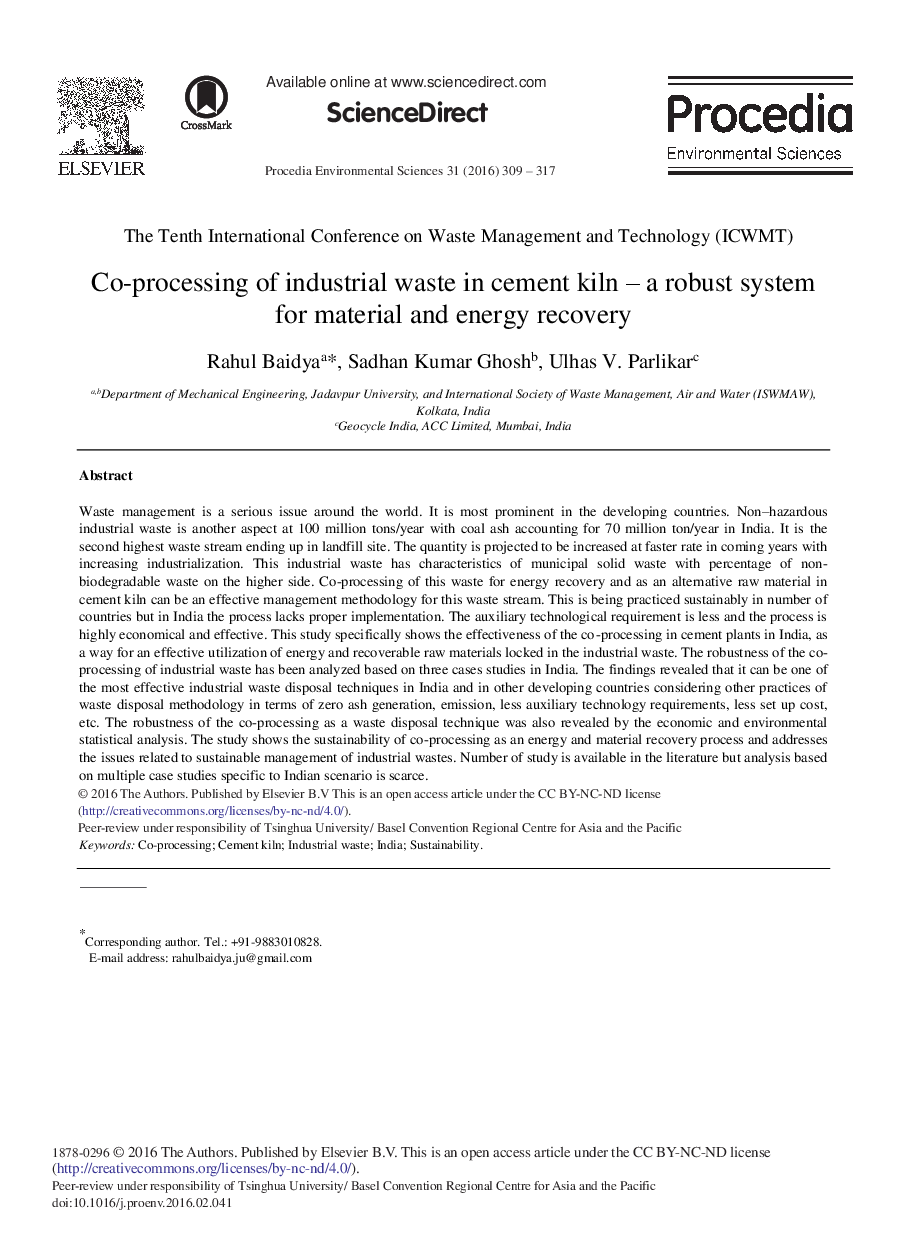| Article ID | Journal | Published Year | Pages | File Type |
|---|---|---|---|---|
| 4401553 | Procedia Environmental Sciences | 2016 | 9 Pages |
Waste management is a serious issue around the world. It is most prominent in the developing countries. Non–hazardous industrial waste is another aspect at 100 million tons/year with coal ash accounting for 70 million ton/year in India. It is the second highest waste stream ending up in landfill site. The quantity is projected to be increased at faster rate in coming years with increasing industrialization. This industrial waste has characteristics of municipal solid waste with percentage of non-biodegradable waste on the higher side. Co-processing of this waste for energy recovery and as an alternative raw material in cement kiln can be an effective management methodology for this waste stream. This is being practiced sustainably in number of countries but in India the process lacks proper implementation. The auxiliary technological requirement is less and the process is highly economical and effective. This study specifically shows the effectiveness of the co-processing in cement plants in India, as a way for an effective utilization of energy and recoverable raw materials locked in the industrial waste. The robustness of the co-processing of industrial waste has been analyzed based on three cases studies in India. The findings revealed that it can be one of the most effective industrial waste disposal techniques in India and in other developing countries considering other practices of waste disposal methodology in terms of zero ash generation, emission, less auxiliary technology requirements, less set up cost, etc. The robustness of the co-processing as a waste disposal technique was also revealed by the economic and environmental statistical analysis. The study shows the sustainability of co-processing as an energy and material recovery process and addresses the issues related to sustainable management of industrial wastes. Number of study is available in the literature but analysis based on multiple case studies specific to Indian scenario is scarce.
